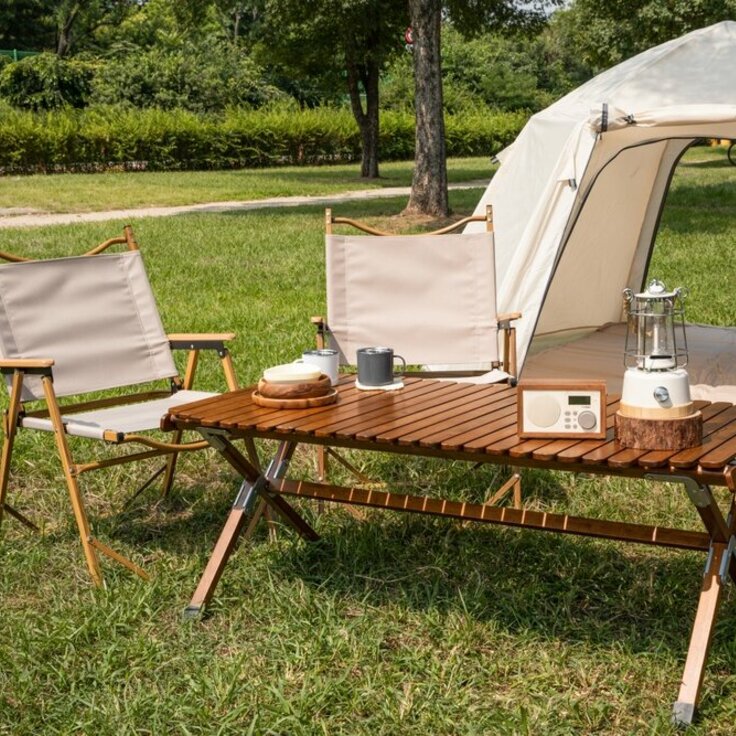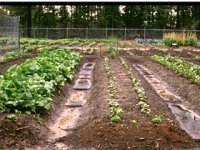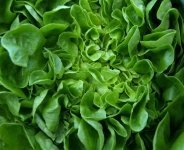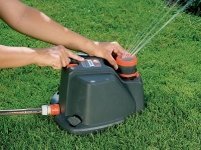Landscaping on a budget!
By J. E. Davidson
You can have a beautiful lawn that rivals your neighbors’ at a fraction of the cost of professional landscaping when you are willing to do some of the labor yourself and follow some of these money-saving tips.
Many homeowners obsess about the state of their lawn grass, using expensive and potentially toxic chemicals to destroy weeds and fertilizers to feed the grass. Lowering your standards a bit can create a healthier lawn naturally. Leaving a few weeds in can add nitrogen to the soil. Legume plants such as clover have roots that are colonized by certain bacteria which extract nitrogen from the air. When the bacteria are finished with the nitrogen it becomes available to the cover crop, and when the cover crop is tilled under the nitrogen becomes available to your yard and garden plants.
Clean water is becoming a precious commodity and watering your lawn can be an expensive part of your lawn care. Planting drought-resistant plants and xeriscaping can reduce the amount of watering needed. Xeriscaping is the creation of a landscape that can withstand drought conditions. Most drought resistant plants will tolerate poor-to-average quality soil and some even prefer poor soil. Landscape features such as rock gardens, ornamental grasses, extended patios, walkways and native wildflower gardens can reduce the amount of watering and fertilizing your lawn requires. Some plants such as hens & chicks, aloe, and stonecrop are great choices for a drought-resistant garden. Plants native to your zone will also require less water and attention. Low-growing ground covers will cost more up front but will require less maintenance than turf grass. Make grassy areas an accent instead of the main element of your lawn or make some aesthetic concessions and plant grass that is tolerant of dry conditions. Plant grass seed instead of paying premium prices for sod. Grass seed will take about six months to become established but will germinate and grow quickly.
Water your lawn more precisely by installing an automatic irrigation system. Drip-type systems can be easily installed by a do-it-yourself homeowner, but sprinkler types may require
professional installation. Automatic irrigation systems will have an initial up-front expense but will save money on watering in the long run since the water can be directed to a targeted area. Save money on plants by purchasing them at a discount store such as Walmart instead of at a nursery. The plants will be of lesser quality but with a little care can become as beautiful as expensive nursery plants. It may take time to sort through the discount plants to find suitable specimens. Take someone with you who is knowledgeable about plants, if you aren’t, and choose plants that are pest-free.
Plants will also go on sale at the end of summer. If you have time to give cheaper plants a little TLC they can save you a good bit of money. Make a plan for your garden and buy only plants that fit into your plan to avoid impulse buying! Water features can be an inexpensive way to make an impact on your landscaping. Many home supply stores have do-it-yourself pond liners and water pumps to create attractive pond and waterfalls. Modern pond supplies make it an easy DIY project. You may be able to find some free stones at a construction site (ask first) or a friend’s home in the country.
Make your own fertilizer by composting kitchen scraps such as fruit and vegetable peelings, coffee grounds, and egg shells (no fats, animal waste, or diseased plants), yard and garden clippings, leaves, woody brush, sawdust, and shredded newspaper. You can buy compost bins, make your own, or just let it decay in a big pile in an out-of-the way corner of the yard. Covering the pile with a tarp will keep the heat in to speed up the process. Work the decomposed matter into the garden soil. Compost can also be used as a mulch. Some cities offer free compost from vegetation removed by the street department work crews. Rent or borrow tools you only need occasionally, like chipper/shredders, rototillers, chain saws, and power washers, or chip in with family or neighbors to buy tools that you can share. Growing fruits and vegetables in your landscape will also save dollars at the grocery!








